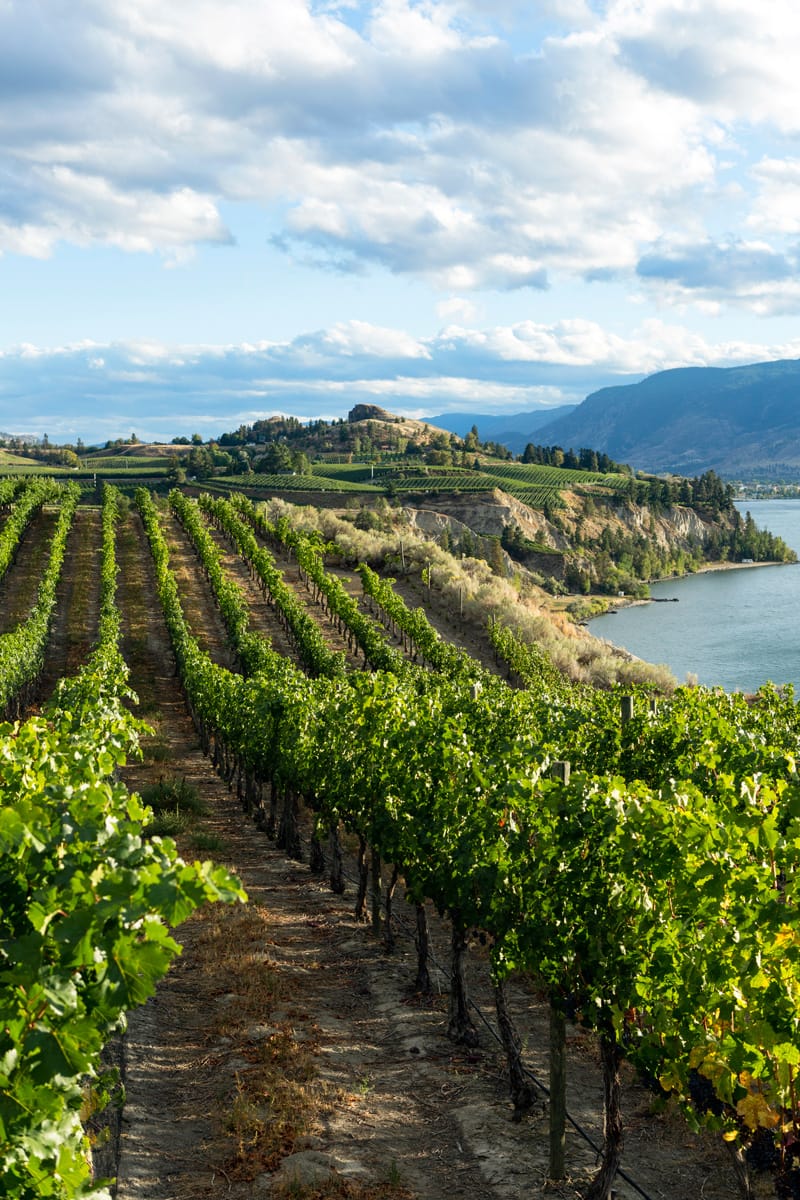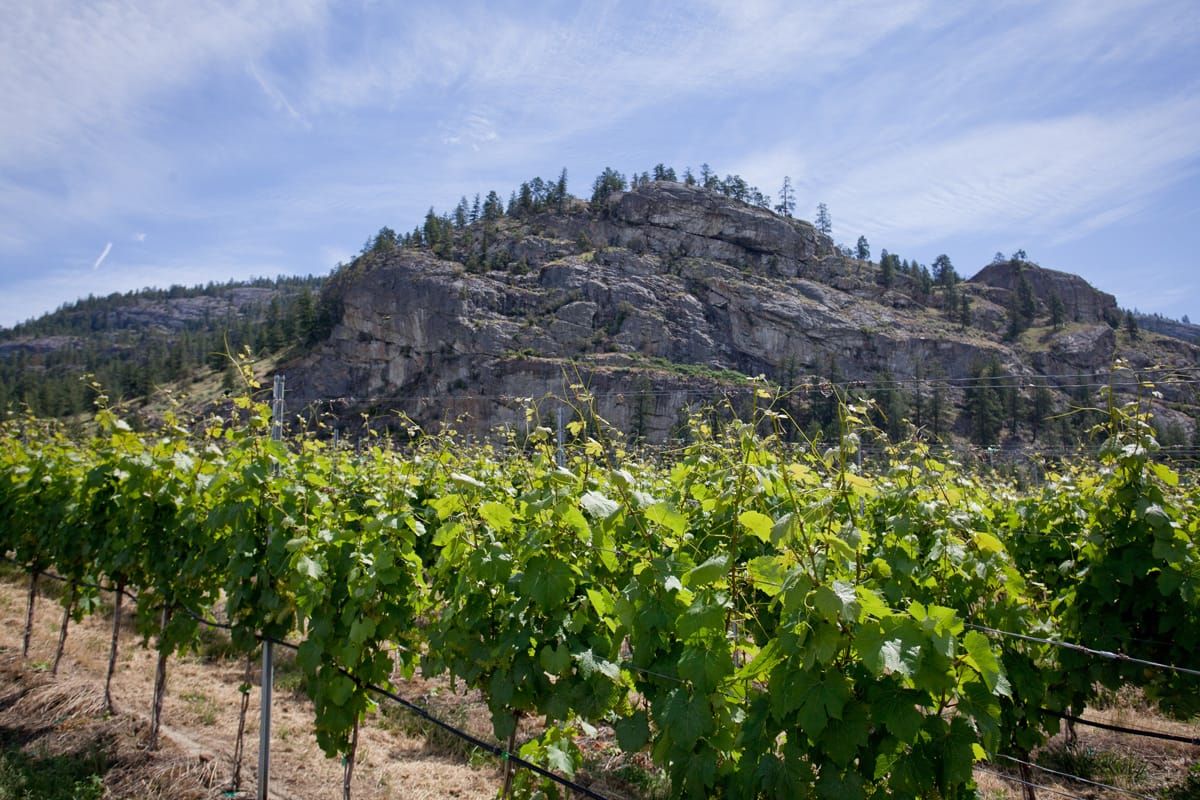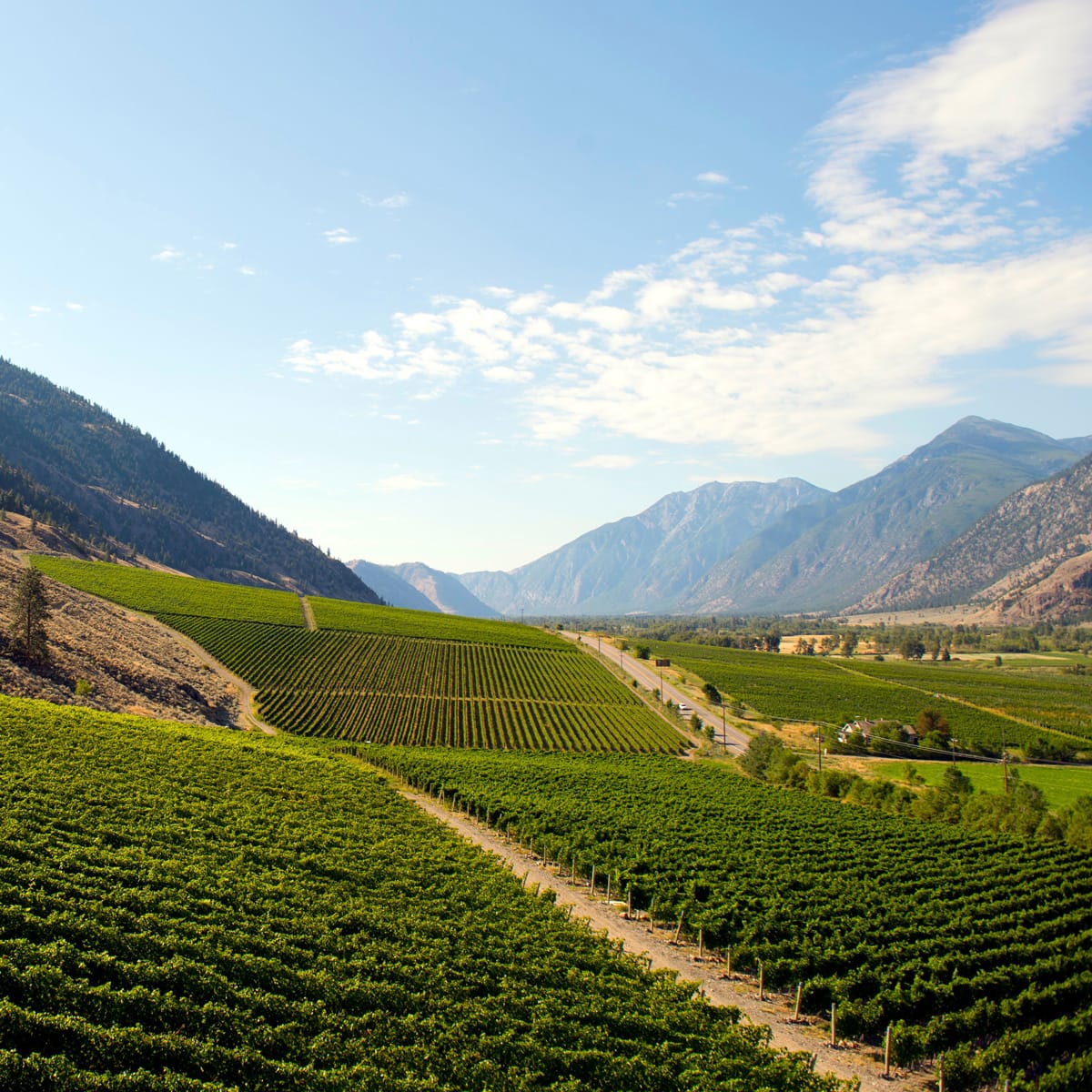
Wine Culture Magazine

The Naramata Bench, north of Penticton, recently became BC’s next sub-GI. istockphoto.com/ laughingmango photo
Change in the wine industry rarely comes quickly. But that’s not the case in British Columbia, where the wine map is changing quicker than you can say “sub-app.”
It wasn’t that long ago when the industry was ruled by a handful of major players, who were quite happy, thank you, with labelling everything “Okanagan Valley” (or “Cellared in Canada,” for wines grown elsewhere but bottled here). After all, based on the KISS principle (keep it simple, stupid), what’s wrong with that? Do we really need to identify where grapes are grown? And does the consumer care anyway? Should we be always transparent?
The answer, of course is “Yes,” “Yes,” and “Yes!” And—breaking news—most wineries nowadays do care, very much.
The move to identify B.C. wine origins more specifically—and transparently—has been gathering steam for some years. It started with the larger wine regions, or Geographic Indications. Last year, the British Columbia Wine Authority added Thompson Valley, Shuswap, Lillooet and the Kootenays to the existing regions of Vancouver Island, Gulf Islands, Fraser Valley, Similkameen Valley, Okanagan Valley and the catch-all British Columbia. That’s in order to encompass recent new growing areas, once considered borderline for ripening. Or not previously considered at all.
Now the process involves delineating smaller growing areas or sub-appellations with unique growing conditions, known in B.C. as sub-Geographic Indications, within the larger, formally identified wine regions. The designation allows wineries to mention the sub-GI on the label, as long as the wine is made 100 per cent from grapes grown within that area.
The process of first identifying and then approving a sub-GI can be arduous and occasionally even controversial. In every instance, the initial impetus comes from growers and wineries within the proposed region as they move to establish a firmer identity. Usually it’s driven by a better understanding of the true potential from their terroir, and also by a desire to protect it.

The rocky hills, warm days and cool nights make the Okanagan Falls sub-GI distinctive from the surrounding areas. Wines of British Columbia photo
That was the motivation that kick-started the very first sub-GI, which was the Golden Mile Bench (on the west side of the Okanagan Valley, south of Oliver), approved in 2015. Next came Okanagan Falls in 2018. Most recently, the Naramata Bench was approved for sub-GI status in May 2019 after years of debate, along with Skaha Bluffs, a 365-hectare area south of Penticton, with only 75 hectares of vineyards.
The first and most critical step towards establishing a sub-GI is for the BCWA to clearly establish the proposed boundaries. That in itself can be a time-consuming and sometimes complicated process, as the application must be firmly grounded on distinctive soil types and other factors. This task, in every case to date, has been ably undertaken by consultant and soil specialist Scott Smith. It’s his report that provides the foundation for the proposal on which the stakeholders vote. A two-thirds majority is required to move the process forward for the Ministry of Agriculture’s approval.
Smith (who these days is digging more soil pits than ever), has been analyzing soils across B.C. wine regions for several years. He’s an expert on what he refers to as the Okanagan’s “glacial landscape,” those transported sediments that form the alluvial fans where much of the region’s better plantings grow. Not only are the soil and rock types important, he suggests, but also the air movement the fans produce. These and other considerations, such as variation by elevation (as in the case of Golden Mile Bench), climate and more all go into the sub-GI proposal.
In the heart of Naramata Bench, Howling Bluff Estate Winery owner Luke Smith is more than familiar with those unique soils, which his vineyards straddle. Over the last 12 years his wines have picked up four Lieutenant Governor Awards of Excellence, among several others of note. For him, Naramata’s move to formal sub-GI status comes not a moment too soon.
“Wine is from somewhere more than it is from ‘someone,’” he says, adding, “Our customers deserve to know that Naramata Bench now means the grapes are from somewhere special.”

The Similkameen Valley has unique pockets that show great potential for sub-GI status, such as the Cawston area where Vanessa Vineyard is located. Similkameen Independent Winegrowers Association photo
Another region ripe for sub-GI designations is the Similkameen Valley.
Mother Nature has already given us terroir and it is us humans that need GIs to show the rest of us where they are.
“For sure there are several areas that lend themselves to sub-GI designation,” says Howard Soon, winemaker at Vanessa Vineyard and one of B.C.’s earliest proponents of terroir-driven wines. “The Vanessa Vineyard and how it was born is certainly a different area and terroir than other B.C. areas I have worked in. One of my self-projects would be to understand and define this beautiful area.”
He adds: “GIs and sub-GIs are mostly a good thing. They define what a wine region is all about. Mother Nature has already given us terroir and it is us humans that need GIs to show the rest of us where they are. The difficult thing for the wine consumer is, if there are too many sub-GIs, the mind boggles.”
On Vancouver Island, the Cowichan Valley is also working its way through the system. That initiative is being led by Blue Grouse winemaker Bailey Williamson, who feels there are plenty of upsides to establishing a Cowichan sub-GI. Identifying the better parcels, he suggests, will encourage more people to grow grapes—and to grow the right grapes, such as Pinot Noir, which is fast becoming a Cowichan calling card.
The consensus, especially among wineries involved in the export market, is that sub-GIs can’t come soon enough. For many it’s yet one more necessary step in spreading the word internationally that B.C. is indeed a credible player, with an appellation system to which others in the world can easily relate.
As Soon says, “I don’t know why we haven’t got more done already. Within the Okanagan Valley there are a ton of different terroirs that could be defined.”

Tim Pawsey writes and shoots at hiredbelly.com as well as for publications including Quench, TASTE and Montecristo. He’s a frequent wine judge and is a founding member of the B.C. Hospitality Foundation.

Tim Pawsey writes and shoots at hiredbelly.com as well as for publications including Quench, TASTE and Montecristo. He’s a frequent wine judge and is a founding member of the B.C. Hospitality Foundation.
@ Vitis Magazine